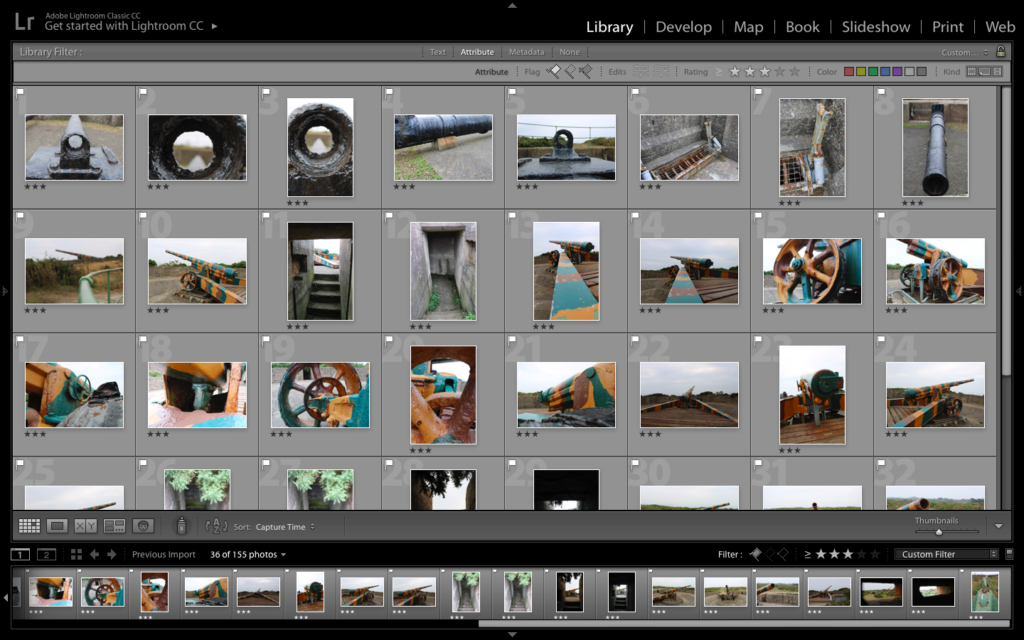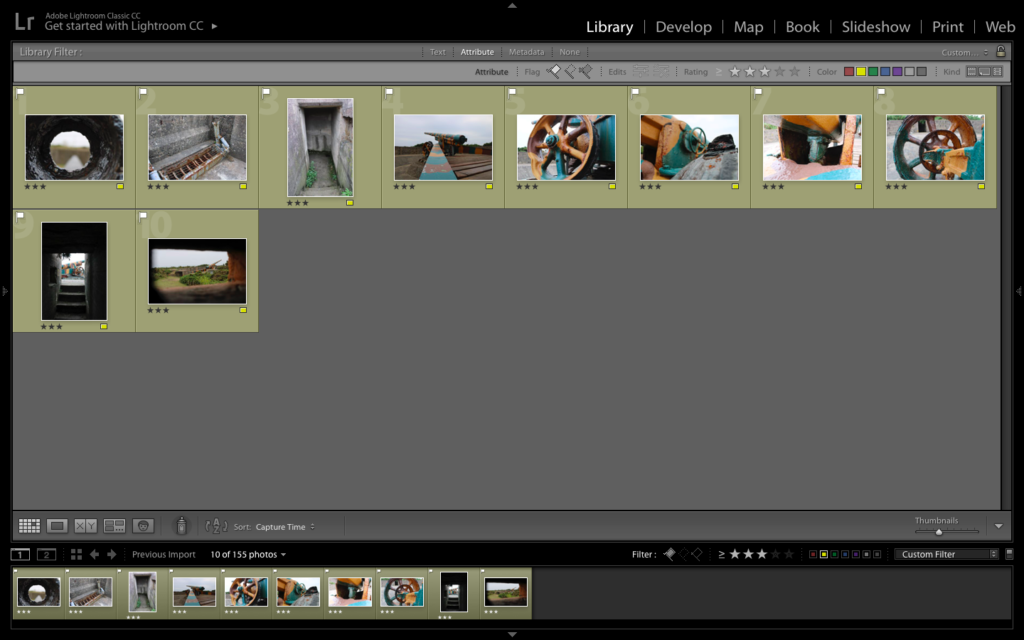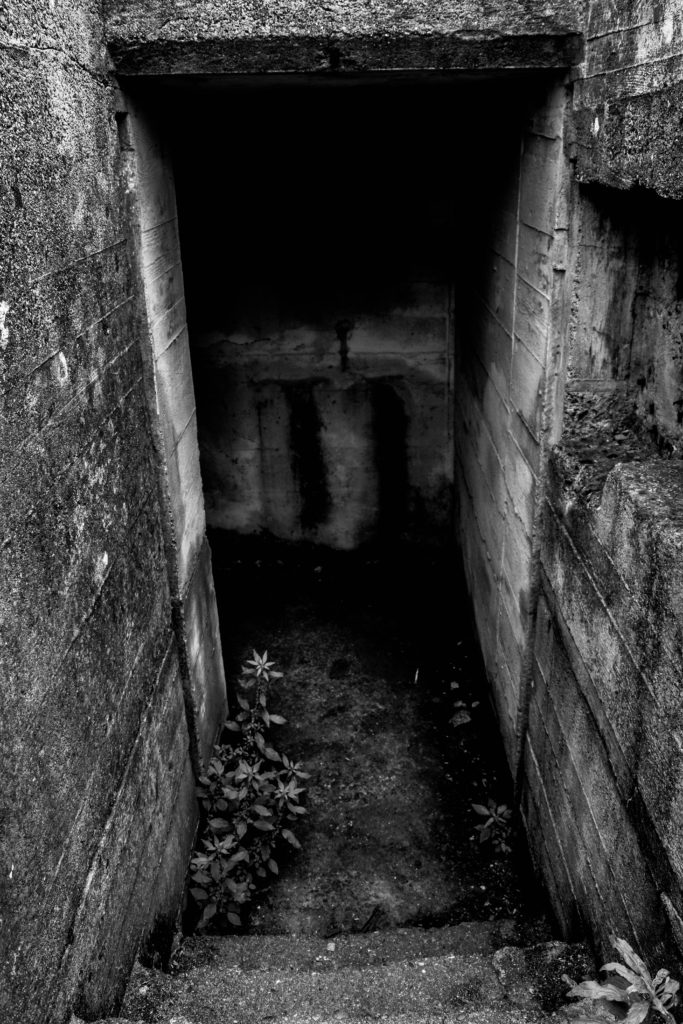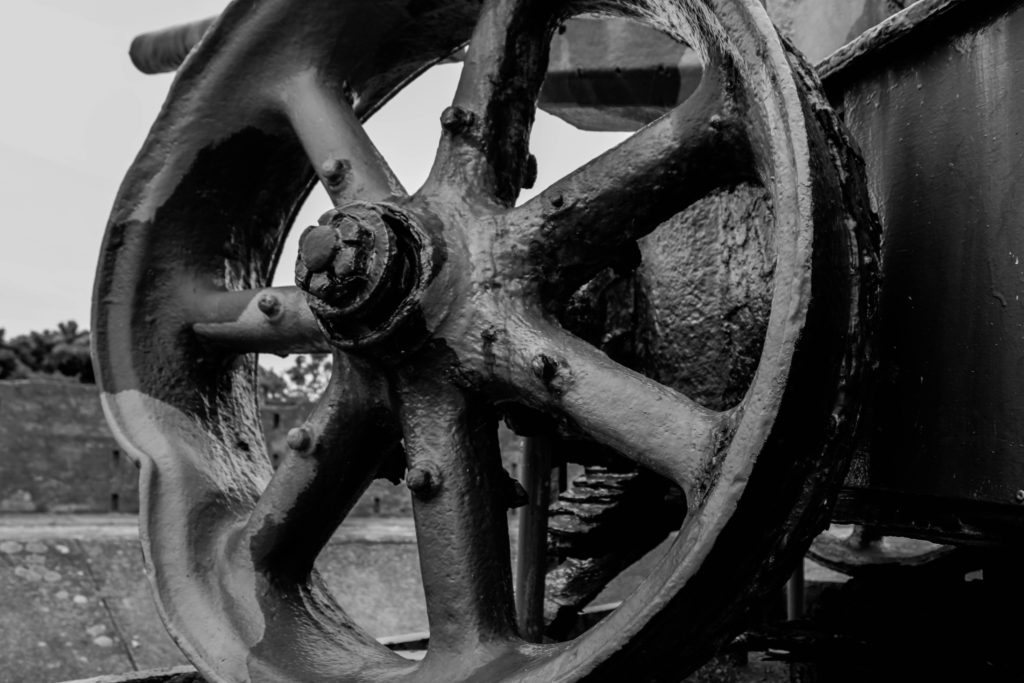Information:
Due to the success of my first trip to Noirmont point, I decided to explore another artillery battery on the island. I wanted to produce more images which supported the theme of bunker abandonment and how nature is taking back the island. I explored more with the weapons located on the site and different details on the structures which could creating an interesting and abstract looking image.
Battery Moltke is an incomplete World War 2 former coastal artillery battery located in St Ouen’s. It is located in Les Lands, which is where all the guns where chucked off the coast at the end of the occupation. The artillery has bunkers, guns and the Marine Peilstand 3 tower located on site. The bunker was being built as the war came to a closure, thus they did not manage to finish making it in time leaving it unfinished. The artillery battery was being built to protect St Ouen’s bay from any attacks to the island. All the different structures were close in proxemics and close to the cliff face, which showcases how the location was ideal for the Nazi’s to prevent anyone entering or leaving the island.
Planning:
To prepare for this shoot I used the AV setting on my camera which allowed me to prioritize my aperture. The weather was some what sunny but had some fog, which meant that my aperture was middle in the range. My ISO was slightly higher than my previous shoot as well due to the lack of sun light provided, did not exceed 600. I used a quick shutter speed, with manual focus in order to allow me to control my camera. I wanted to explore with macro images as well landscape to capture the bunker. When editing I am going to simply stick with the techniques used from the first shoot, but it may vary due to the outcomes I produce.
Lightroom Selections:



Color Edits:
For my color edits I decided to explore and experiment with the different developing tools within light room. I always made the white balance setting to ‘as shut’, but adjusted the clarity, shadows, blacks, whites etc to enable the best possible outcome for my imagery. For the first edit I wanted the center of the frame to be lighter than the outsides, to create a sense of entrapment and allows the viewers eyes to be easily guided around the frame of the image. I did this by using the Radial filter tool. Moreover, for this edit I wanted to encapsulate how nature is growing around the bunker, which I showed by increasing the structure and clarity of the images. For my second macro image I wanted to showcase the detail and texture of inside the the gun, I did this by making the whites and black sliders down to bipolar ends, and made the clarity slightly darker allowing this effect to be created. I am very happy with the way in which these two color edits have come out due to how they clearly present the theme of nature taking back the island from the occupation. In addition, the camera techniques (such as depth of field and rule of thirds) used are effective as they allow the archaeology to present decay and historical factors of the second world war.


Black and White Edits:
For my black and white images I looked at exploring with my macro images and creating a tonal contrast within them. I achieved this by adjusting the blacks, whites, shadows and clarity, by moving the sliders closer to either end allowed a clear tonal contrast within the images, making them interesting for viewers to look at. Moreover, I made these decisions to allow the detail and the formal elements of line and texture to clearly be presented in my images. I also looked at cropping my images to emphasis the details on the bunkers which clearly showcases the decay of the bunkers.





Conclusion:
To conclude I am very happy with the outcomes produced in this shoot. Experimenting with macro and landscape photography allowed me to present bunker archaeology in a new way, developing the idea of capturing bunkers and presenting the decay of them. In addition, I have been able to successfully select and develop these image which showcases my ability to use light room effectively and understand the different settings and how to adjust them to make an interesting outcome. Exploring another bunker has also allowed me to understand that the layout of each site are similar and contain practically the same things, however the weapons and views are different which allows new landscapes to be presented. Moving forward I would like to look at photo montages, combining images from both shoots with archival material in order to showcase bunker archaeology in a new light.
